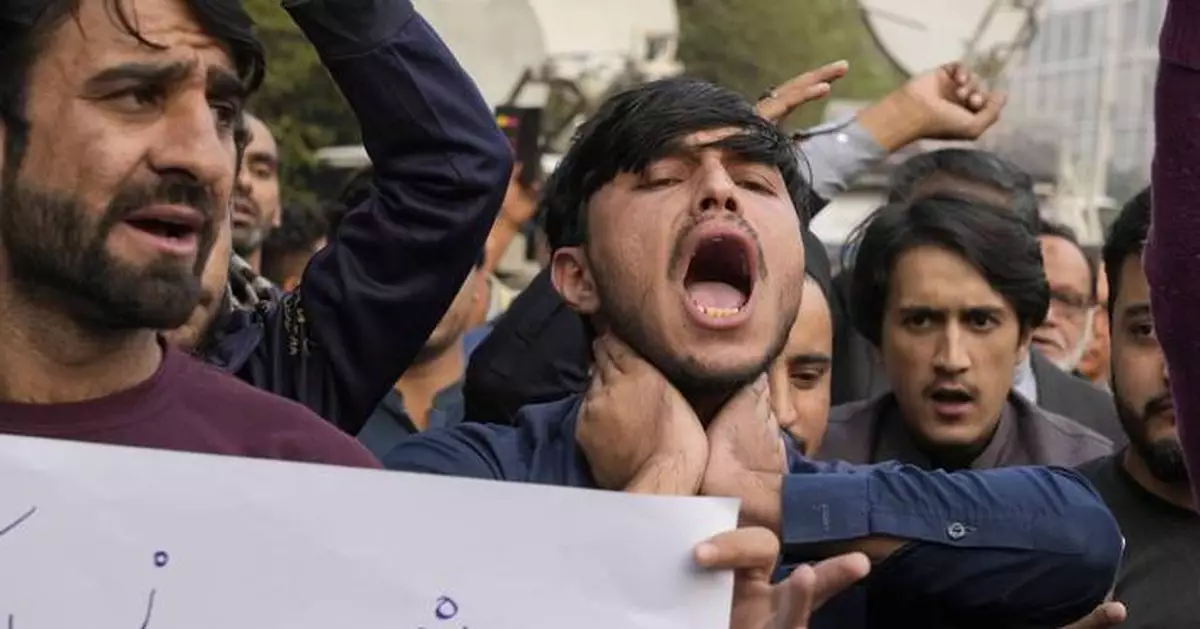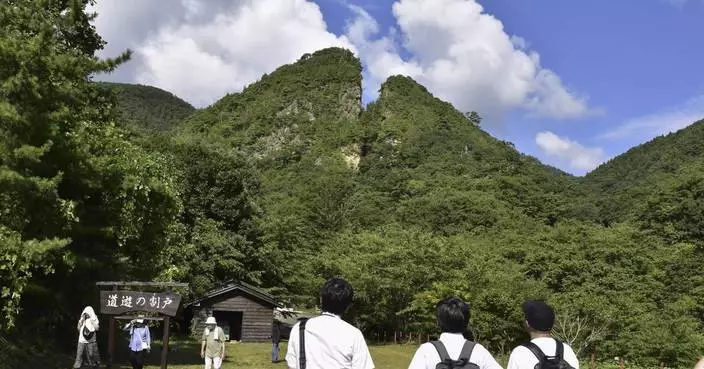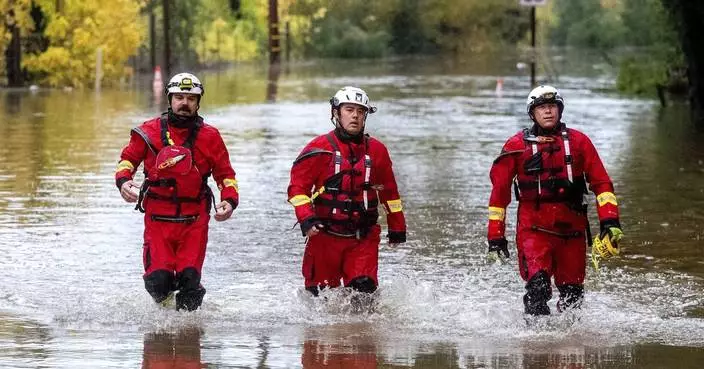PESHAWAR, Pakistan (AP) — Fighting between armed Sunni and Shiite groups in northwestern Pakistan killed at least 33 people and injured 25 others, a senior police officer from the region said Saturday.
The overnight violence was the latest to rock Kurram, a district in Khyber Pakhtunkhwa province, and comes days after a deadly gun ambush killed 42 people.
Shiite Muslims make up about 15% of the 240 million people in Sunni-majority Pakistan, which has a history of sectarian animosity between the communities.
Although the two groups generally live together peacefully, tensions remain, especially in Kurram.
The senior police officer said armed men in Bagan and Bacha Kot torched shops, houses and government property.
Intense gunfire was ongoing between the Alizai and Bagan tribes in the Lower Kurram area.
“Educational institutions in Kurram are closed due to the severe tension. Both sides are targeting each other with heavy and automatic weapons,” said the officer, who spoke anonymously because he was not authorized to speak to the media.
Videos shared with The Associated Press showed a market engulfed by fire and orange flames piercing the night sky. Gunfire can also be heard.
The location of Thursday’s attack was also targeted by armed men, who marched on the area.
Survivors of the gun ambush said assailants emerged from a vehicle and sprayed buses and cars with bullets. Nobody has claimed responsibility for the attack and police have not identified a motive.
Dozens of people from the district’s Sunni and Shiite communities have been killed since July, when a land dispute erupted in Kurram that later turned into general sectarian violence.

Shiite Muslims chant slogans to condemn the killing of Shiite Muslims by gunmen in an ambush in Kurram district, during a demonstration in Lahore, Pakistan, Friday, Nov. 22, 2024. (AP Photo/K.M. Chaudary)
BAKU, Azerbaijan (AP) — The United Nations' annual climate talks pushed into overtime Saturday under a cloud of anger and disappointment as negotiators were well short of a deal on money for developing nations to curb and adapt to climate change.
A draft of the final agreement Friday pledged $250 billion annually by 2035, more than double the previous goal of $100 billion set 15 years ago but far short of the annual $1 trillion-plus that experts say is needed. Through the early hours of Saturday morning, The Associated Press saw lead negotiators from the European Union, the United States and other nations going through the empty halls from meeting to meeting as delegates tried to hash out a new version of the deal.
“We're still working hard,” U.S. climate envoy John Podesta told the AP past 4 a.m. local time.
The climate talks, called COP29, in Baku, Azerbaijan, were scheduled to end Friday. Workers have already begun dismantling the venue for the talks.
Wealthy nations are obligated to help vulnerable countries under an agreement reached at these talks in Paris in 2015. Developing nations are seeking $1.3 trillion to help adapt to droughts, floods, rising seas and extreme heat, pay for losses and damages caused by extreme weather, and transition their energy systems away from planet-warming fossil fuels and toward clean energy.
Representatives of some of the nations that are obliged to contribute the cash said the $250 billion climate finance figure is realistic and reflects their limits at a time when their own economies are stretched.
The amount in any deal reached at COP negotiations — often considered a “core” — will then be mobilized or leveraged for greater climate spending. But much of that means loans for countries drowning in debt.
But that meant little to vulnerable nations, many already battered by extreme weather made worse largely by emissions from the burning of fossil fuels they've had little to do with. Most of those emissions have come from the developed world since the Industrial Revolution.
“Developed countries must commit trillions, not empty promises," said Harjeet Singh, Director for the Fossil Fuel Non-Proliferation Treaty Initiative. "Anything less makes them squarely responsible for the failure of these talks and the betrayal of billions across the globe.”
Nikki Reisch, director of the climate and energy program at the Center for International Environmental Law, said the offering was unacceptable not just because the money is low, but because “it’s really designed to escape and evade the legal obligation that developed countries have” to pay for the climate change they have largely caused.
Bertha Iris Argueta Tejeda, a policy advisor for a German environmental and human rights group, said the language was a “complete abdication” of the Paris agreement by developed countries.
“I thought this was a potential outcome, I just didn’t think it was going to be so blatant,” she said.
Several dozen activists marched in silence outside the halls where delegates meet late Friday, raising and crossing their arms in front of themselves to indicate rejection of the draft text.
With bleary eyes, seated around cold pizza, a group of youth activists chatted to keep each other awake in one of the main halls of the venue.
“All of us are kind of in mourning in a way,” said Jessica Dunne, with the Alliance of Non-Governmental Radical Youth. This is her fourth COP, and along with the other activists present, she’s disappointed and deeply worried about the current deal on offer. But the group said being in community eases the painful emotions that come with a process Dunne called an “abject failure.”
“In these halls tonight, as we’re sitting here and we’re talking and we’re dancing and crying and laughing, it kind of gives you hope that there will be another day that we’re going to fight for,” she said.
“I’m really tired,” said Erica Njuguna, a climate activist from Kenya. “But we are holding the line, making sure that COP delivers for people on the front lines of the climate crisis. So far it hasn’t.”
Associated Press journalist Joshua A. Bickel contributed to this report.
The Associated Press’ climate and environmental coverage receives financial support from multiple private foundations. AP is solely responsible for all content. Find AP’s standards for working with philanthropies, a list of supporters and funded coverage areas at AP.org.
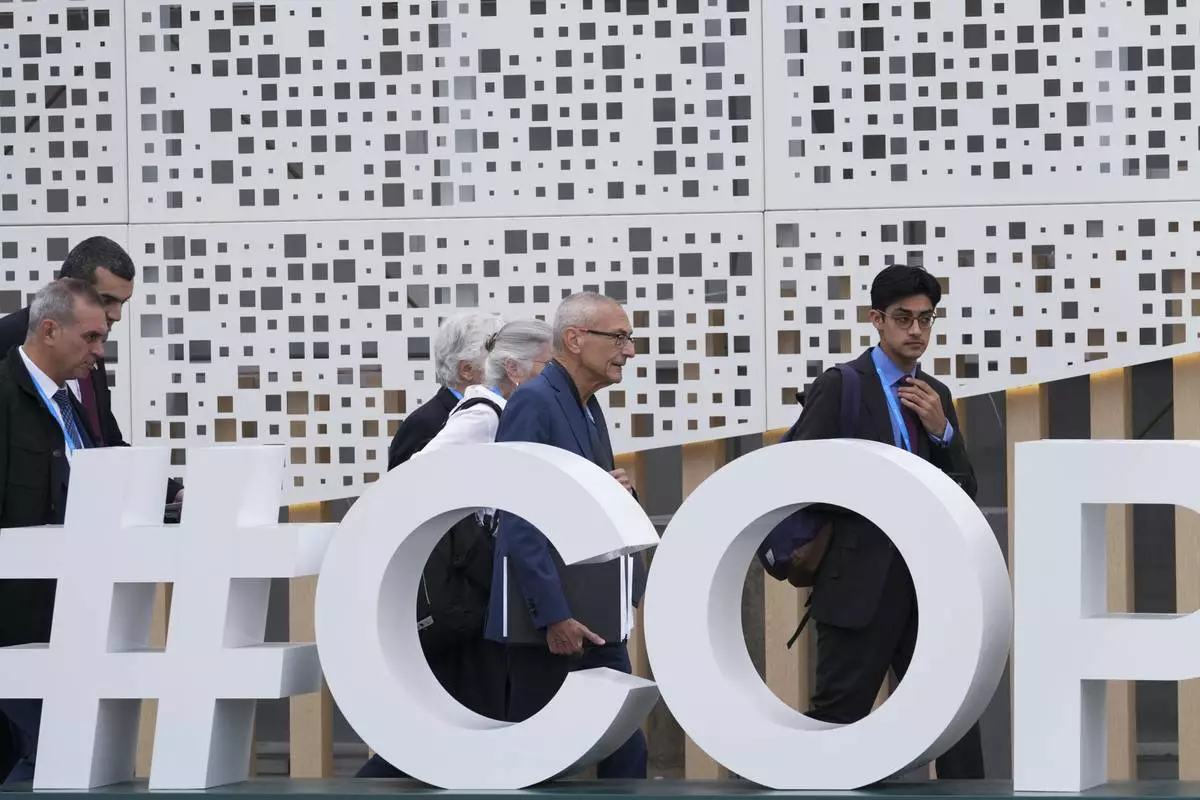
John Podesta, U.S. climate envoy, center right, and U.S. Deputy Climate Envoy Sue Biniaz, center, walk outside the venue for the COP29 U.N. Climate Summit, Saturday, Nov. 23, 2024, in Baku, Azerbaijan. (AP Photo/Sergei Grits)
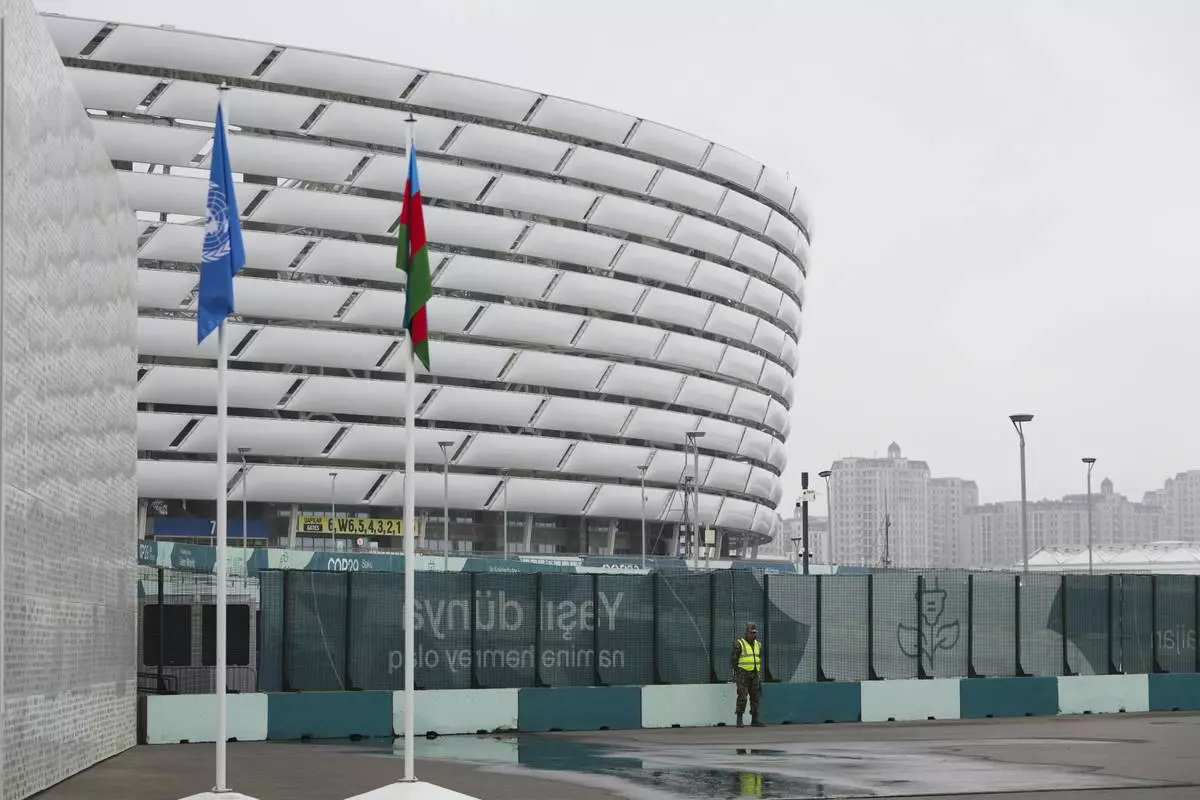
A member of security stands with the Baku Olympic Stadium in the background during the COP29 U.N. Climate Summit, Saturday, Nov. 23, 2024, in Baku, Azerbaijan. (AP Photo/Sergei Grits)
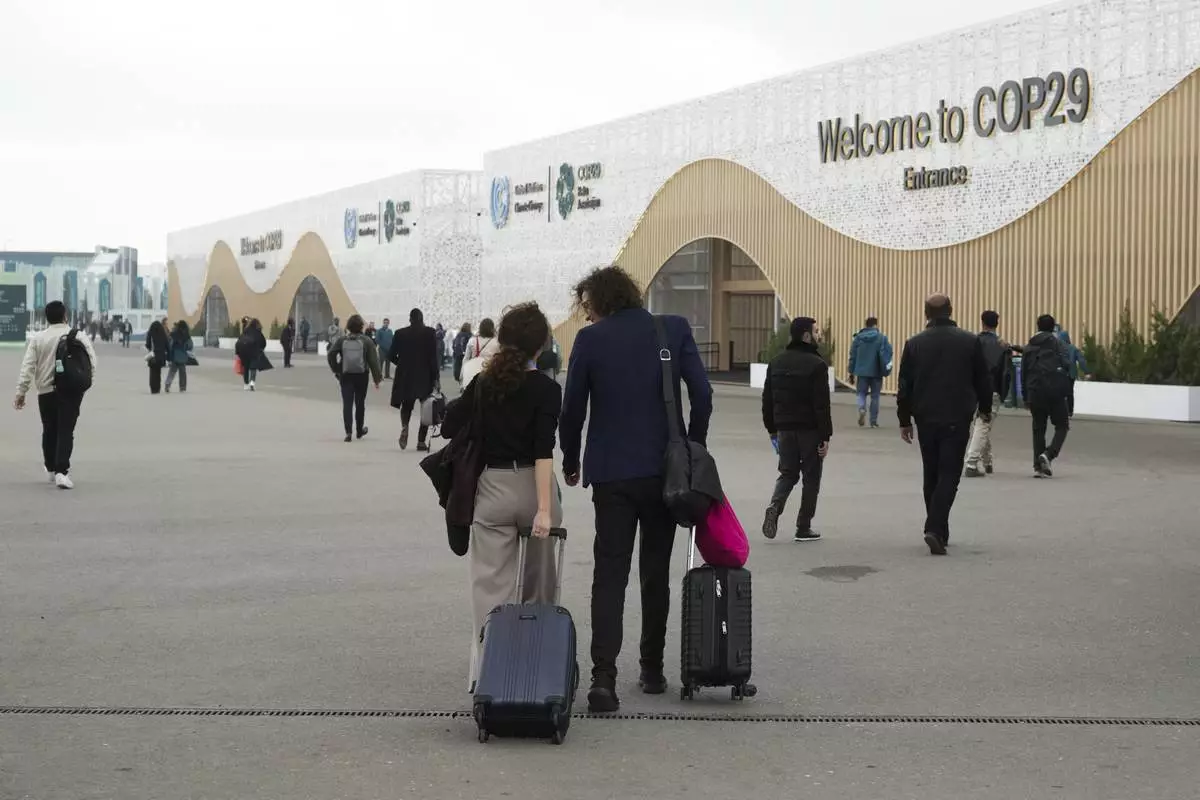
Attendees pull luggage as they walk into the venue for the COP29 U.N. Climate Summit, Saturday, Nov. 23, 2024, in Baku, Azerbaijan. (AP Photo/Sergei Grits)
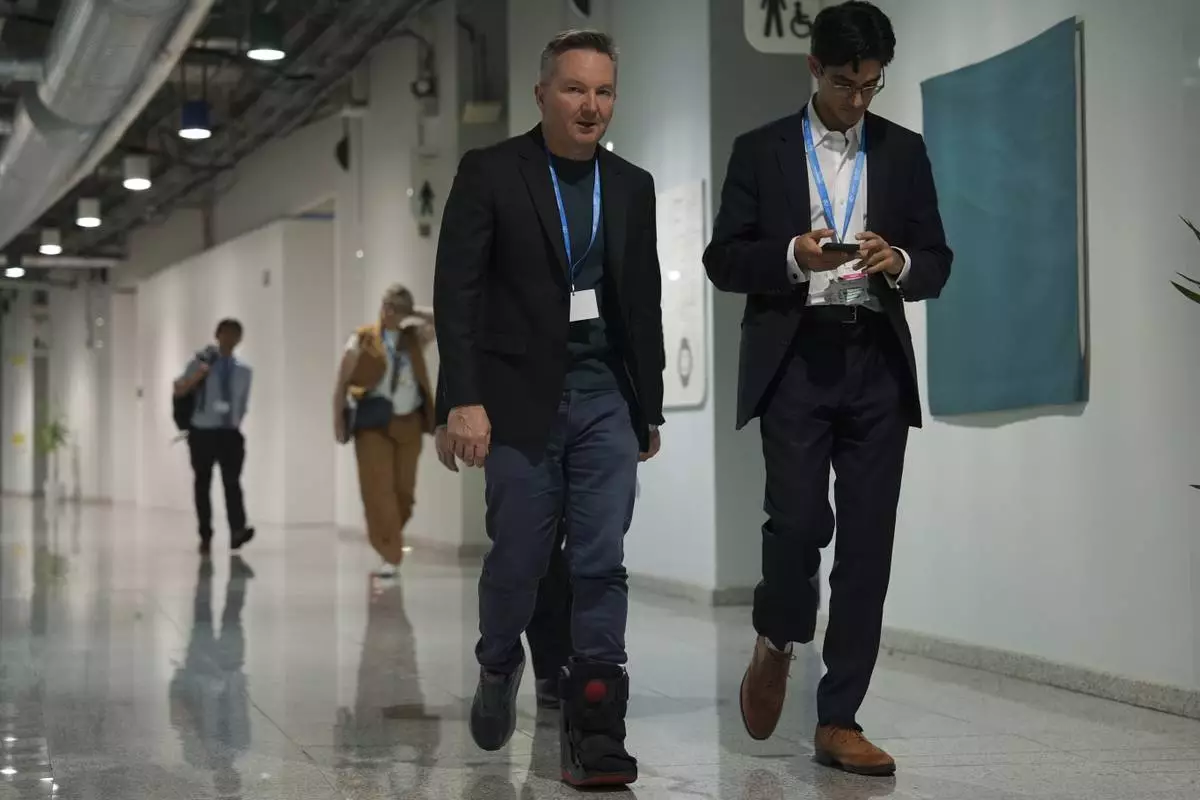
Australia Climate Minister Chris Bowen, center, walks through a hallway at the COP29 U.N. Climate Summit in the early hours of Saturday, Nov. 23, 2024, in Baku, Azerbaijan. (AP Photo/Joshua A. Bickel)
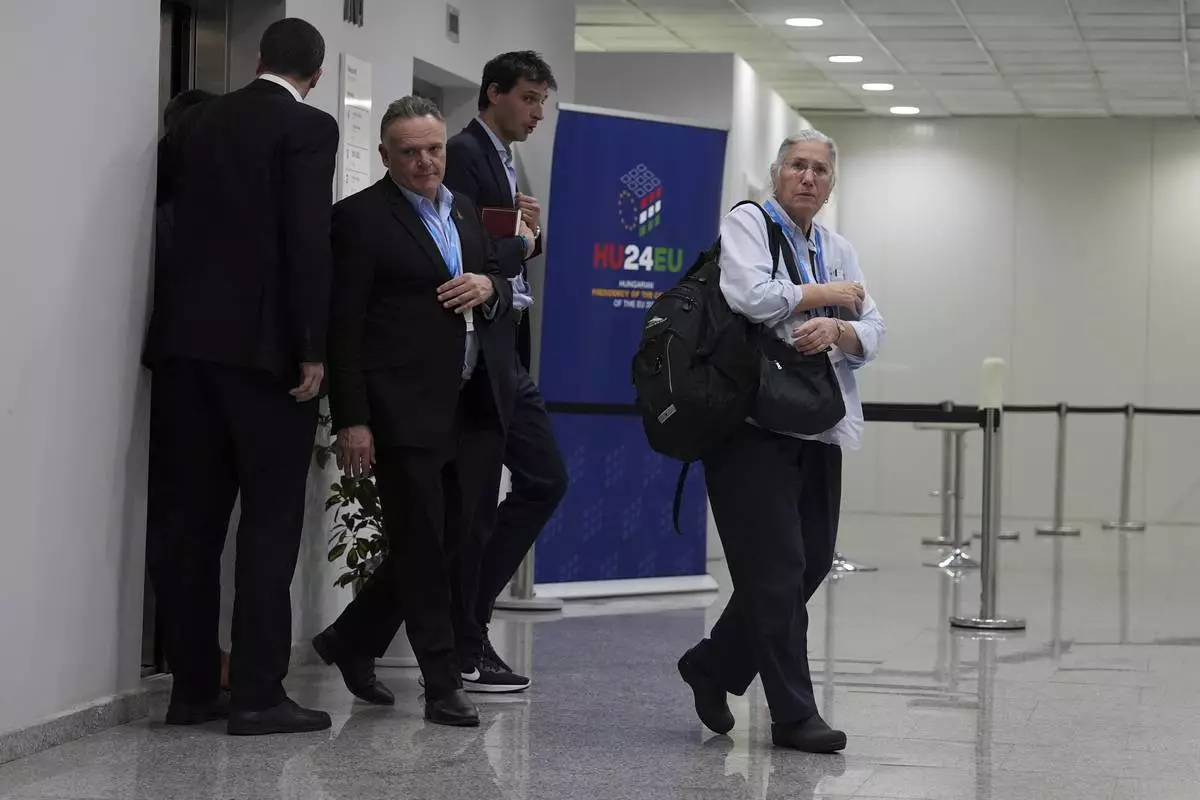
U.S. Deputy Climate Envoy Sue Biniaz, right, and Wopke Hoekstra, EU climate commissioner, second from right, walk out of an elevator during the COP29 U.N. Climate Summit in the early hours of Saturday, Nov. 23, 2024, in Baku, Azerbaijan. (AP Photo/Joshua A. Bickel)

John Podesta, U.S. climate envoy, right, walks through the hallways of the COP29 U.N. Climate Summit in the early hours of Saturday, Nov. 23, 2024, in Baku, Azerbaijan. (AP Photo/Joshua A. Bickel)

People sleep in the Chinese delegation offices at the COP29 U.N. Climate Summit in the early hours of Saturday, Nov. 23, 2024, in Baku, Azerbaijan. (AP Photo/Joshua A. Bickel)
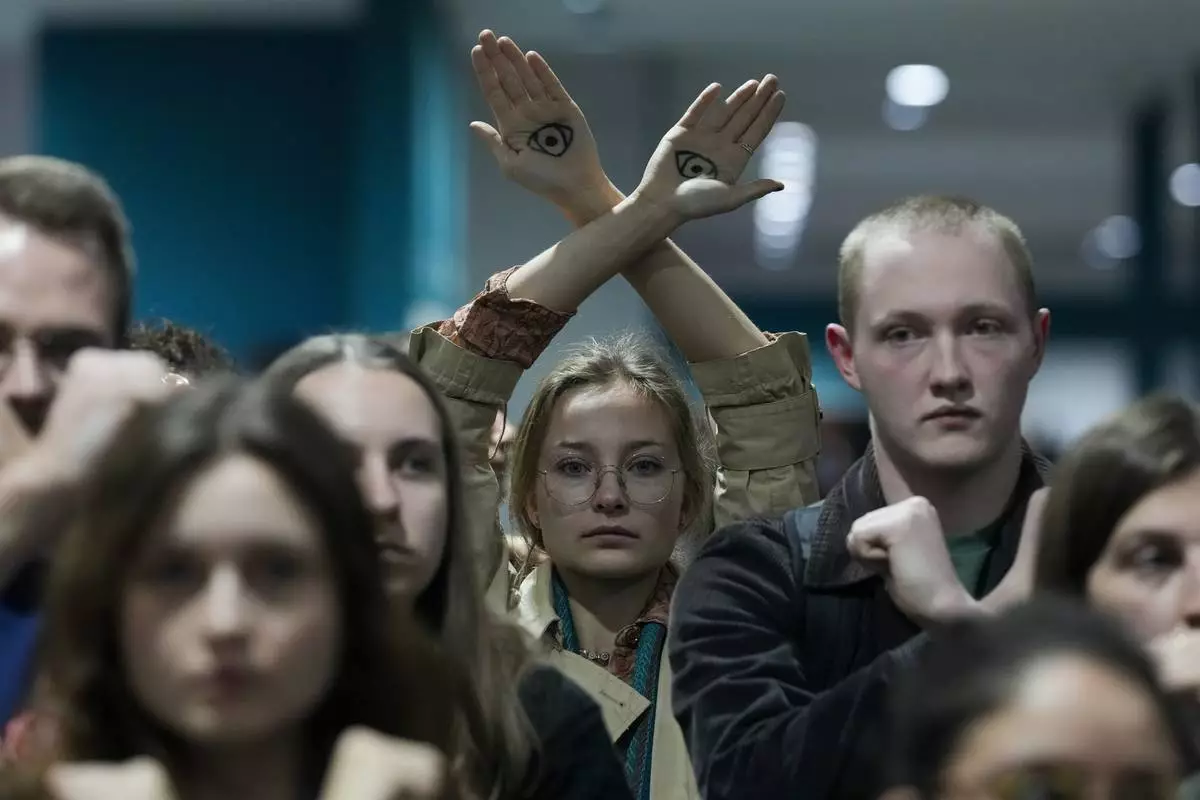
Activists demonstrate in silence protesting a draft of a proposed deal for curbing climate change at the COP29 U.N. Climate Summit, Friday, Nov. 22, 2024, in Baku, Azerbaijan. (AP Photo/Rafiq Maqbool)



